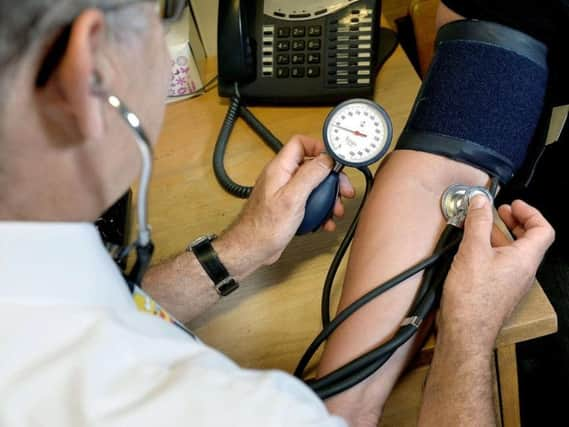Wigan doctors seeing more patients than national average but GP numbers rising


Recent reports show that GP numbers have fallen across the UK over the last five years, with doctors warning that they are seeing more patients than they think is safe.
Other news: Man taken to hospital after falling out of a window at a house in WiganNHS Digital data shows there was the equivalent of 183 full-time GPs in the NHS Wigan Borough Clinical Commissioning Group in December 2018. It means there were an estimated 56 GPs for every 100,000 people in the area – far less than the England average of 62.
Advertisement
Hide AdAdvertisement
Hide AdIt is, however, an increase on the number of GPs when the NHS first published comparable data in September 2015: there were 174 then.
Analysis by the Nuffield Trust for the BBC found the number of GPs per 100,000 people across the UK has fallen, from nearly 65 in 2014 to 60 last year – the first sustained fall of this kind since the late 1960s.
Another study by Pulse magazine found that over-tired doctors were sometimes seeing twice as many patients as they should.
It meant that GPs were struggling to be sympathetic to the patients they were seeing during appointments.
Advertisement
Hide AdAdvertisement
Hide AdThe Pulse poll of 1,681 GPs for BBC’s Panorama found that they are working an average 11-hour day, including eight hours of clinical care and three hours of admin.
On average, each GP dealt with 41 patients per day, despite saying 30 was a safe number.
One in 10 dealt with 60 or more patients – double the safe limit.
Prof Helen Stokes-Lampard, chairwoman of the Royal College of GPs, said she is one of those affected by heavy workloads.
Advertisement
Hide AdAdvertisement
Hide AdShe said: “In my own practice recently, I had a 12-hour day and 100 patient contacts. GPs across the UK will tell similar stories.”
Prof Clare Gerada, former chairwoman of the RCGP, said there is a risked tired GPs could make mistakes, and high numbers of patients added to this.
“You could miss a result or misread a letter, or you don’t focus on the right symptom or ask the right question,” she said.
Dr Tim Dalton, local GP and chair of NHS Wigan Borough CCG, said: “It is good news that since the clinical commissioning group took over responsibility for GP practice commissioning, the number of GPs in the Borough has risen by five per cent. Whilst we do have fewer GPs per 100,000 patients than some places, we are actually bucking the national trend by seeing an increase.
Advertisement
Hide AdAdvertisement
Hide Ad“We work very closely with all our GP practices and do not believe any of our practices are regularly seeing more patients than is safe.
“We are attracting new GPs to come and work in the borough and a big contributor to this is the high number of local practices who are committed to training GPs.
“With practices, we have developed the Wigan Borough GP Fellowship scheme which then encourages newly qualified GPs to stay in the borough.
“We also believe in developing more roles in GP practices, including attracting more advanced nurse practitioners, introducing practice-based pharmacists and developing a new role in practice – the community link workers whom have been very positively received by patients.
Advertisement
Hide AdAdvertisement
Hide Ad“Finally, GPs are the heart of our local NHS and they are increasingly well supported by wider services in the community through the development of the Healthier Wigan Partnership.
“Together, this all helps the practices stay resilient and means that GPs can spend more time focusing on those people who most need their help.”
A report in March from the King’s Fund, Nuffield Trust and Health Foundation predicted that GP shortages in England will almost triple to 7,000 by 2023-24.
It said the Government would miss its target to recruit 5,000 more GPs by 2020 and the only way to cope with the growing workload was to put more pharmacists and physiotherapists into GP practices.